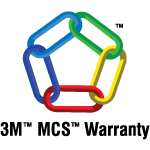Achieving your goals and remaining on course in the present-day project management environment is not an easy task. If you lack proper procedures, strategies, and personnel, it is simple to deviate from your objectives. This can lead to poor resource management, missed deadlines, and unclear success indicators. However, the good news is that you can minimize these hazards by integrating transparency into your project management methods. In this article, we will discuss the importance of transparency in project management and why it is critical for your organization.
1. Knowing Where Your Business Stands Is Crucial
A truly transparent fleet branding project is one where all stakeholders have access to business metrics. These metrics might include vehicle branding status, accuracy of installations, task management, or any other information that could affect the outcome of your branding goals.
It’s important to understand the current standing of your project because it will help you create a strategic plan for the future. In order to do that, you need to know where you currently stand financially, as well as operationally. This data will inform your strategy and give you insight into what changes are needed to reach your goals.
2. Encouraging Collaboration
When vendor project managers and client stakeholders collaborate, they can build a strong relationship based on trust and respect. Both parties can work together to identify and discuss potential risks, provide feedback, and brainstorm solutions to any potential issues that may arise. This open communication helps to ensure that all stakeholders are on the same page and that the project is progressing as planned.
Moreover, the collaboration between vendor project managers and client stakeholders also helps to maintain the project’s scope and budget. Through regular communication and discussions, they can adjust the scope of the project and make sure that it is being completed within the agreed-upon budget. This helps to maximize the efficiency of the project and ensure that the client is getting the best possible value for their money.
3. Creating an Environment of Accountability
By promoting transparency in project management, an environment of accountability is established among all project stakeholders, including both vendors and clients. When all details are openly shared, team members are more likely to take responsibility for their actions. A project manager who holds their team members accountable for their performance is also accountable for their own actions, leading to a greater sense of responsibility among the project team. This creates a positive cycle where no one tries to avoid responsibility. In a transparent business, hidden agendas are eliminated, and the focus is solely on achieving goals and producing results through hard work. This fosters a culture of transparency, accountability, and mutual trust, leading to better outcomes for all involved.
4. Building Trust with Stakeholders
Stakeholders are anyone who has an interest in your business – investors, customers, suppliers, partners, etc. When you’re transparent with these people, you’re building trust among them. If you’re being open and honest with stakeholders, they are likely to reciprocate that openness. Trust is crucial when it comes to business partnerships and relationships. It is the foundation of any successful relationship. When stakeholders can see what’s going on behind the scenes at your company, it shows them what you’re made of. It shows that you’re trustworthy and honest. And it will help you build relationships that are beneficial for everyone involved.
How to Avoid Project Pitfalls and Mistakes with brandRESPONSE
It can be a daunting task to maintain your brand’s integrity. When trying to keep track of all of your branded assets across numerous locations, it may seem like a mission impossible. If you want to alter your brand or even buy a company, it could be a risk to manage everything internally.
At Signature, we offer a comprehensive solution to ensure that your brand remains consistent across all touchpoints. Acting as your single point of contact, we utilize our advanced technology platform and dependable processes to support you throughout your branding initiatives. Our team meticulously considers every detail of each branded item across all locations, incorporating them into your brand’s dashboard. We offer multiple options for asset type, timeline, and quality objectives, providing you with cost certainty. Once your plan is finalized, we execute your brand transformation while providing close supervision. With real-time updates accessible from anywhere, you can monitor progress and ensure compliance with ease. Your brand dashboard also enables you to conduct compliance checks at any time, giving you complete control over your brand’s consistency.
Conclusion
Transparency in project management can be a difficult concept to grasp. Some organizations aren’t used to sharing so much information. Fortunately, there are ways to ease into it. You can start with sharing information with certain stakeholders. As you gain more confidence in your abilities, you can increase the level of transparency. The more transparent you are as a business, the more likely you are to succeed. It’s important to keep in mind that transparency doesn’t just apply to project management. It applies to every aspect of your business. Whether you’re creating documents, managing projects, or communicating with stakeholders, transparency is the key to success.

We proudly use 3MTM graphic films and overlaminates.
